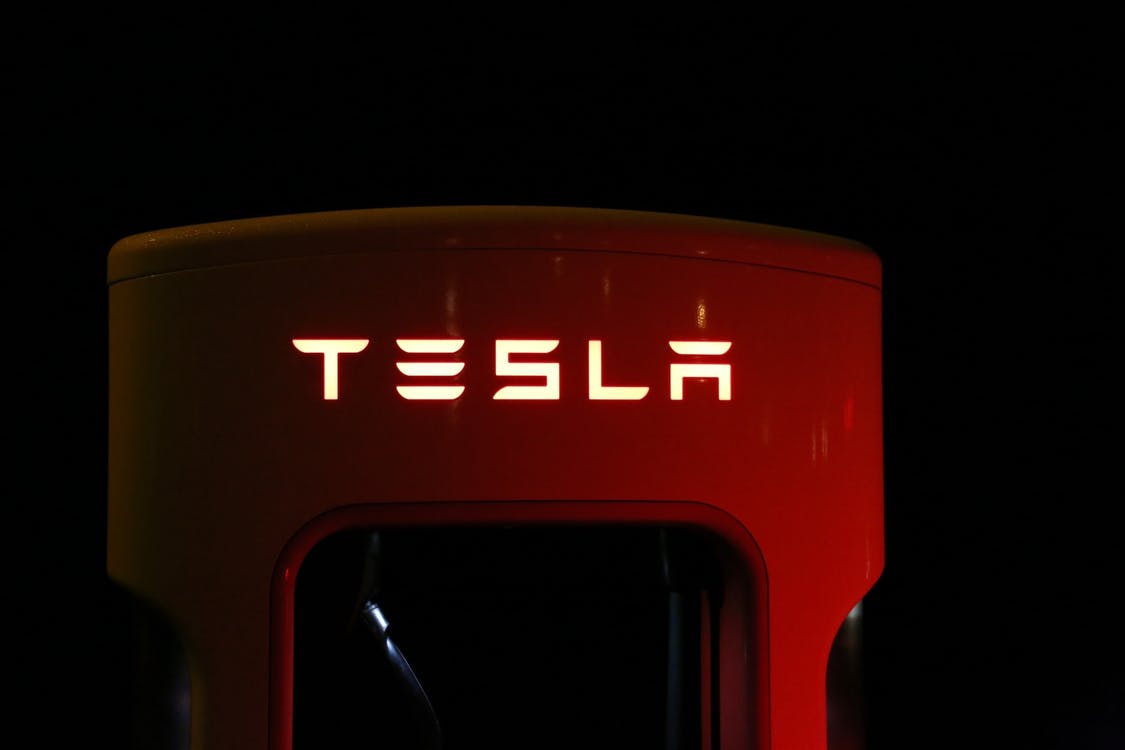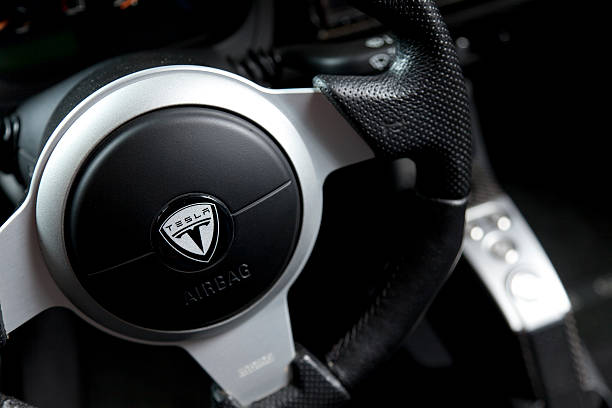Tesla is famous for its electric vehicle merchandise, with its Tesla Model 3 gracing the stage to be the world's best-selling EV for two years, 2020 and 2021. This is impressive. But what's more stunning? The EV giant did this without any of its vehicles speeding on a county highway in a TV commercial.
The company has no advertising or marketing department. Yet, it sold 936,000 vehicles and pocketed $44 billion in sales in 2021. How's this possible without paid ads and no chief marketing officer? It all boils down to the brilliant Tesla Marketing Strategy.
But how on earth could a multibillion-dollar company have a marketing strategy without a marketing team behind it?
First, it’s safe to admit that Tesla is unconventional. This runs throughout the organization up to its ever-tweeting CEO, Elon Musk. While Tesla marketing strategy is authentic, it’s not some secret stashed in a combination safe like the KFC recipe. It’s something you’re familiar with, only that the EV giant applies the marketing tactics so well that it spent $0 on paid ads to sell cars in 2020.
So, what exactly is Tesla marketing strategy, and how does it work? Read on to find out, and learn how to apply it to increase business growth.

Tesla Customer-driven Marketing Strategy: A Costless, Yet Effective Marketing Technique
Marketers call it user-centric, human-centric, or customer-driven marketing. However they choose to rebrand it, the idea remains the same. Customer-driven marketing involves meeting the needs and expectations of a target audience. To this end, several top brands deploy ads to propagate their value creation to people, as we see in Amazon ads.
But not all businesses, particularly startups, can run on a $16.9 billion ad budget. So, how can entrepreneurs implement a customer-driven marketing strategy, minimizing the cost of ad spending?
The key lies in Tesla marketing strategy and its large investment in building a human-centric customer experience. This includes human-centric marketing, marketing aligned with the company's goals, and word-of-mouth marketing.
A Human-Centric Marketing
Tesla marketing strategy squares on improving user experience. It’s an unwritten mantra adhered to by the EV company. It starts from its research and design phase, flowing throughout the buyer’s journey. Let's consider the first stage, innovative designs.
Innovative Designs
Tesla is laser-focused on developing innovative products that deliver an incredible driving experience. In 2021, it invested over $2.59 billion in R&D to pursue this goal. The endeavor has led to significant self-promoting landmark designs in the EV market.
For instance, Tesla’s sentry mode deploys external cameras to survey the environment and report potential threats to the owner. The autopilot is another futuristic feature. These unseen features are cool, but what’s more chilling is the Tesla S 17-inch touchscreen display.
You can call it the Tesla tablet. It has everything needed for a smooth drive–from maps to weather updates to a music player. Potential customers can also design and order a Tesla, styling the car's interior and exterior to their taste. These innovative features and customization options bring Tesla a cult following that improves the company’s sales via referrals.
An Enticing Referral Program
Referral programs are a fantastic way of rewarding customers that lead new users to a brand. Tesla ran eye-catching referral campaigns in 2015. This brought in many referees that received incentives like accessories, free car servicing, and software updates. A YouTube promoter pounced on this opportunity, bringing over $12 million in referral sales and taking home two next-gen roadsters.
The news spread out, and the program got even bigger in 2019, as Tesla gave away 80 new roadsters to referrers for free. The EV multinational had to kill the program due to expenses.
Regardless, Tesla rolled out new rewards enticing enough to lead in potential customers. For instance, you could experience a SpaceX rocket launch or have your photo floating in deep space.
Businesses that imitate the idea behind Tesla’s referral program indirectly make customers marketers. Potential buyers tend to relate with external human users compared to advertisers that churn out ads all over the web.
Personalized Service Options
Car owners often encounter frustrating friction points to having a ride. This frequently occurs in dealerships, where sales personnel might smooth-talk customers to close a deal at their expense. Tesla knows this is bad business for its target audience and designed a fully functional online sales center to cater to their needs genuinely.
Tesla's online sales center was built by George Blankenship, who also doubles as the designer of Apple’s retail store. The sales center makes purchasing a car seamless, time-efficient, and convenient. This eliminates dealers focused on earning a commission and care less about helping customers meet their needs.
Additionally, prospective buyers can test drive Tesla EVs, after which the company follows up closely with an option to configure their future car online.
Readily Accessible Post-Purchase Customer Support
Keeping up with customers should go beyond the doorman bidding them goodbye after closing a sale. Tesla knows this and designed impressive post-purchase support that even greets its customers at their doorstep. But how could that be for an EV company?
The Tesla ranger, a team of mobile Tesla-trained technicians, delivers repair services to your homes, on the highway, or anywhere else convenient for you. Also, an automatic self-diagnosis software program identifies issues and updates riders on them. Then, a remote Tesla technician can communicate instructions for a quick fix or be physically present if the problem is quite complex.
This saves the tremendous stress of towing a car to an auto repair shop. Moreover, Tesla has a well-structured network of supercharging stations to pump in electricity when your vehicle is running low on battery.
Drive Marketing Efforts Via Company’s Goal
People are increasingly aware of the need for products that not only appeal but solve personal and even societal challenges. Tesla’s mission to accelerate the world’s conversion to sustainable energy wholeheartedly resonates with many consumers.
The EV company keeps the public in the loop with updates about products, operations, and work culture via its sustainability report. Pursuing its mission further, Tesla released its EV patent to the public. With this, competitors could tap into their idea and join the sustainability revolution.
Of course, this doesn’t mean you should throw your company’s patent on social media. But, looking beyond suppressing competitors is healthy for business and industry growth.
Word-of-Mouth Marketing
Beyond buying the experience, customers also pay attention to brand stories. This is a subtle art of spreading a business message. Yet somehow, Tesla managed to turn it into enthralling events with publicity stunts. And they’ve got the news covering their story, making it viral in the open world.
A cross-promotion between Tesla and SpaceX, Tesla Starman took marketing to new heights. A starman in a roadster launched into space with a rocket, thrusting away from life-bearing earth into the vast void. An event that gripped the world from outer space, going mainstream for days.
Back here on earth, Tesla had other plans to spread the word about its cars. They had press members test-drive the Model S and write reviews about it. What cost customers (pun intended) a $5,000 deposit was available to the press for free.
Companies like FOX and MSN spread the news–making Tesla motors go viral on social media. Still, on social media, Tesla’s Elon Musk is popular for driving engagements with Twitter users on the company's EVs. He responds to tweets, providing helpful tips for enjoying a Tesla even better and gaining impactful feedback.
A Tesla customer, for instance, suggested Tesla automatically adjust its steering wheel for easy exiting once it's parked. Musk responded within 24 minutes, and the proposal became a new feature via a software update. Almost any Twitter user, from red carpet celebs to unverified accounts, can engage Elon Musk regarding Tesla and even issues outside its business domain.
What's more, Musk appreciates customers for reaching out to Tesla through him. CEOs functioning actively as marketers and even customer service reps are a rare sight in the business world, but a norm for Elon Musk on Twitter.
This got Tesla on Forbes, obviously not its list of world billionaires, for having Musk's Twitter account as their primary marketing channel worth $40 billion.

What’s it Worth? Is Tesla Marketing Strategy Truly Driving it Ahead of The Competition?
Powerful EVs are breaking into the automotive market, and it's electrifying just how well they're doing this. In 2021, the global EV market share was 9% compared to 2.5% two years before. Tesla motors led this accelerated growth, packing a 14% market share with over 936,00 units sold.
Competitors also charged forward with impressive sales figures in a bid to be the EV market king.
Here’s an estimate of what they sold:
- Toyota, 674,000 units
- BYD, 594,000 units
- General Motors, 517,000 units
- Volkswagen Group, 453,000 units
When you gauge these numbers with Tesla’s, you can see the margin is quite close. However, it becomes an entirely different race when you consider ad spend. Tesla invests $0 on ads for its vehicles, while other EV giants got a 30-second ad in the Super Bowl for $6.5 million.
That’s surely a supercharged ad and not all businesses can afford it, particularly startups. So, what are the key takeaways from Tesla marketing strategy that improves the customer experience while powering growth and sales?
A Short Marketing Lesson for Growing Businesses
Tesla marketing strategy can serve as a unique model to grow your business while minimizing marketing costs. It’s not that ads are bad, don’t convert, and can’t run on a low budget–but startups first need to understand customer’s pain points.
This would help you offer solutions such that customers know it resolves their problems. Check these powerful points you can snatch from Tesla marketing strategy.
- Startups can significantly reduce advertising costs by incorporating a memorable customer experience, from R&D up to the delivery of products/services.
Additionally, growing businesses should also deliver a post-purchase experience that meets users at the point of need. This could be a well-crafted service, like a software upgrade, that elevates consumer’s satisfaction. Post-purchase services fuel customer loyalty as people who feel genuinely cared for tend to revisit your business. - Build a community. Tesla's marketing strategy involves building a one-on-one engagement with customers, taking Elon Musk’s consistent Twitter interaction as a case study.
People only seek communities with functional goals. After all, why would you join an online space when you can’t brag about their achievements. This is why Tesla has a massive number of zealous followers.
Thanks to its unique mission for a sustainable environment via clean energy and the ability to deliver on it. So, you should have a well-spelt business goal and let it drive every facet of your business activities. - Top management could be a great touchpoint for community engagement. Elon Musk is active on Twitter, responds to questions, and gets impressive feedback for improving Tesla products. Startup founders should engage directly with customers and strengthen the relationship as their business grows.
- Have a solid marketing mix. While Tesla squares on human-centric marketing, it seamlessly incorporates viral marketing. We can see this in Tesla Starman. Small businesses might not be able to take marketing to such heights. However, they can still go viral via word-of-mouth. You should consider SEO marketing, another powerful tool that organically flows with customer-driven marketing.
- Building an iconic brand requires authenticity. This is why the big brands and their products stand out, but delivering business uniqueness to customers calls for marketing. That’s why we have a catalog of educational articles like this to level up your marketing. Check out related articles on Netflix marketing strategy for actionable insights.




 Entrepreneurship
Entrepreneurship





